
22 Sep 1875: The founders of First Presbyterian Church
Stories of the 22 founding members
and the pioneer preacher.
One of Ashland’s first churches.
150th anniversary celebration in 2025.
Published September 2025.
“There is no church, and no saloon, but whisky is sold by the bottle and preaching is done in the schoolhouse; and therefore, the people are generally happy.”
Ashland Tidings newspaper, Jun 17, 1876 (First issue — Vol. 1, No. 1)
The quote above is a famous description of Ashland from the first issue of our local newspaper, which published from 1876 until 2019. How is it possible that First Presbyterian Church of Ashland was founded in 1875, yet the first issue of the newspaper in 1876 said “there is no church” and “preaching is done in the schoolhouse?” Keep reading to find out.
It began with pioneers wanting to create a new life “out west.” It began with a preacher who had failed once, then burned out once, yet still had a heart to help people “out west.” For our story, “it” is the First Presbyterian Church and “out west” is the pioneer town of Ashland in the Rogue Valley of Southern Oregon.
In August of 1875, twenty two people were the founders of First Presbyterian Church of Ashland. I will introduce you to all of them but one, as well as the man who brought them together. This history photo essay is about people, early Ashland pioneers.
1875 to 2025 — The 150th anniversary celebration
Cathy Carl, historian for the First Presbyterian Church, asked me to help her research the charter members of the church. I did a “deep dive” into documents and photos in the church collection, Rogue Valley Genealogical Society library, Southern Oregon Historical Society library, and the internet. This developed into a September 2025 “Trolley Tour” for church members and friends during the 150th anniversary celebration of the church’s founding. First Presbyterian rented the Jacksonville trolley for the day, and the trolley driver Terry helped make the event special. As I spoke about Reverend Williams and the founding members, our trolley tour drove by homes where some of the founders lived. We stopped at the Ashland Cemetery to see grave sites where many founders are buried. This photo essay is based upon the Trolley Tour stories, and follows the basic route of the tour.
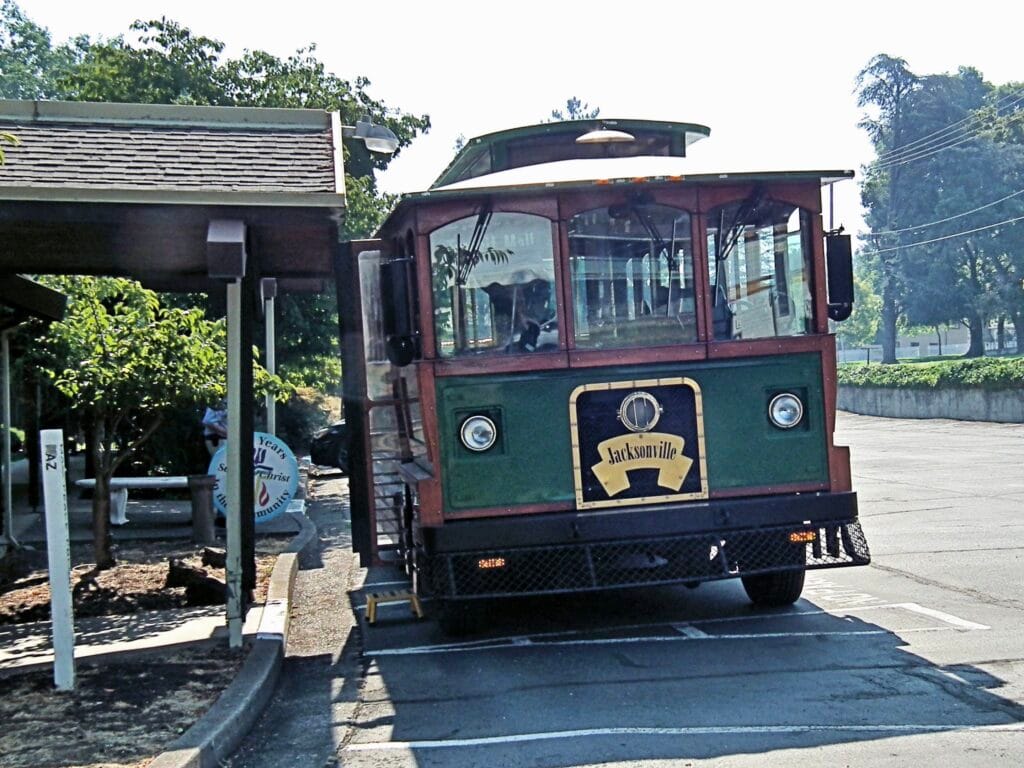
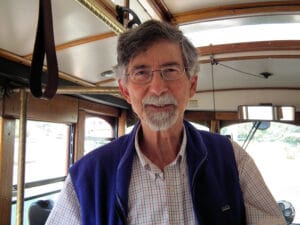
(photo by Linda Purdom)
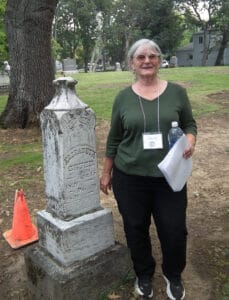
(photo by Linda Purdom)
The preacher: Reverend Moses Allen Williams
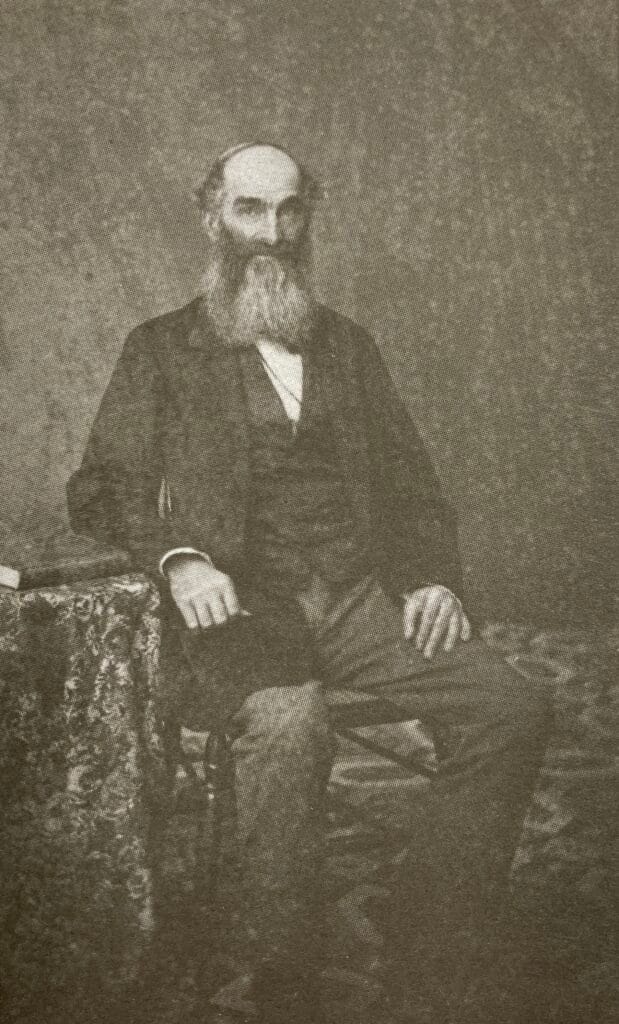
Let’s begin with Reverend Williams, as I did on the Trolley Tour. Born in 1811 and raised in Pennsylvania, Moses Williams had a very practical early education, learning flour mill operation and farm work. He built fences, plowed, seeded and harvested. He milked cows, learned to ride horses, to hunt and fish. Though he became a Presbyterian minister at the age of 33, he continued to use many of these skills throughout his life.
He attended Jefferson College in Pennsylvania, graduating at age 27 in 1839. Ordained as a Presbyterian minister in 1844, he then attended two theological seminaries – graduating from Princeton Theological Seminary in 1849. That’s a lot of education for a rural country preacher!
His first pastorate did not go well. During three years at the Presbyterian Church in Uniontown, PA, membership in the church declined. It was said that members were dissatisfied with his sermons. Williams resigned in 1852 and looked for something else to do.
His second church job was also challenging. He applied for and was appointed to start a Presbyterian School in Chile, South America. After three years as both teacher and administrator of the school, he was so worn out that he feared continuing the punishing workload there would be fatal.
He moved on again. In his early 40s, he matured into a preaching missionary in rural parts of California, Washington and then Oregon. He felt called to settle down in the Rogue Valley of Southern Oregon, and he seems to have loved it here.
Picture yourself on October 31, 1857, at the home of Isaac Hill, just outside of Ashland. Here’s a quote from Clifford Miller’s biography of Williams. “He [Reverend Williams] was first entertained at the home of Isaac Hill. The next day, he preached at the Dunn schoolhouse…. There were about a dozen present in the morning and 35 or 40 at the evening service. He visited Claiborne Neil, Patrick Dunn and other families at the head of Bear Creek.”
Mary Hill Dunn remembers that day in her memoir. “[My] father went round and told all the neighbors that there would be preaching services at the school house the next Sunday. When the day arrived, father’s horses had strayed away, so father hitched up a yoke of oxen to a big lumber wagon and took the preacher, his own family and as many of the neighbors as he could pick up.” That’s what life was like when only about 300 people lived in the Ashland area.
Many of the people present that day were among the charter members of Ashland First Presbyterian Church, years later in 1875.
Reverend Williams continued to preach in the Rogue Valley for decades. In addition to the Ashland church, he established churches in Jacksonville, Phoenix and other towns.
The first church buildings
As mentioned, First Presbyterian Church of Ashland was officially founded on August 28, 1875 by 22 charter members. The congregation was still holding services and Sunday school in school buildings, as they had been doing since 1857. At some point (perhaps the 1860s), five church members had raised $45 and purchased an acre of land from Abel Helman on Church Street, but the group lacked funds to build on the land.
Fundraising got serious in 1877, which included selling the lot on Church Street. Members bought a corner lot at North Main and Helman streets from the Odd Fellows lodge, and finally had enough funds to build their own church.
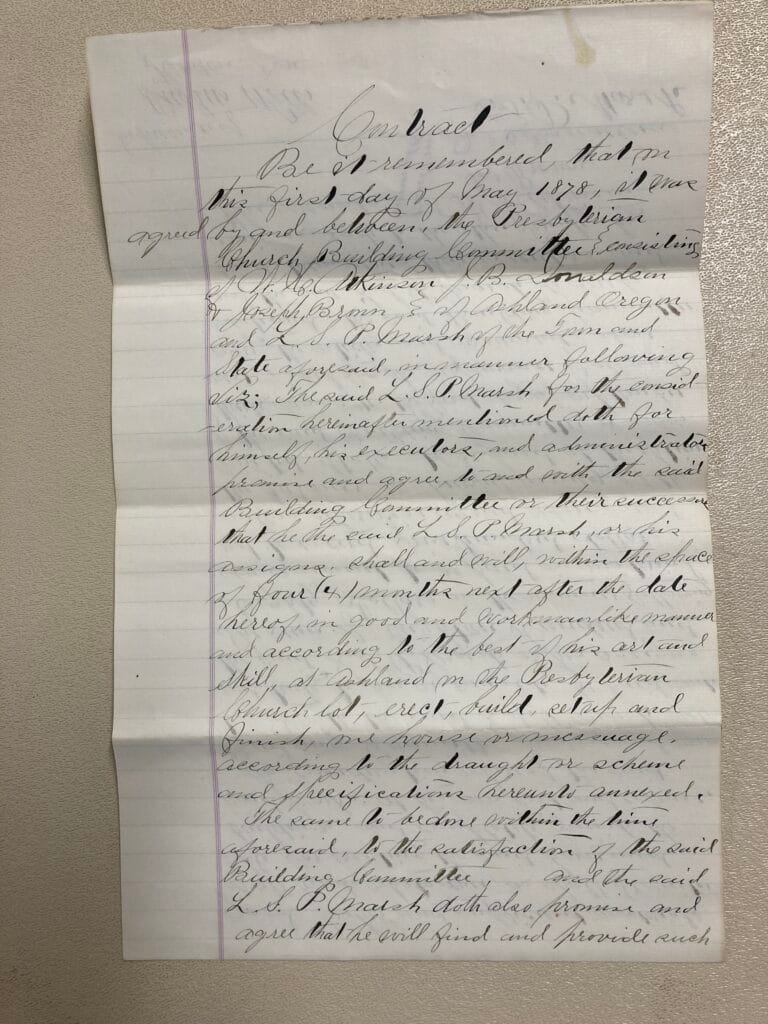
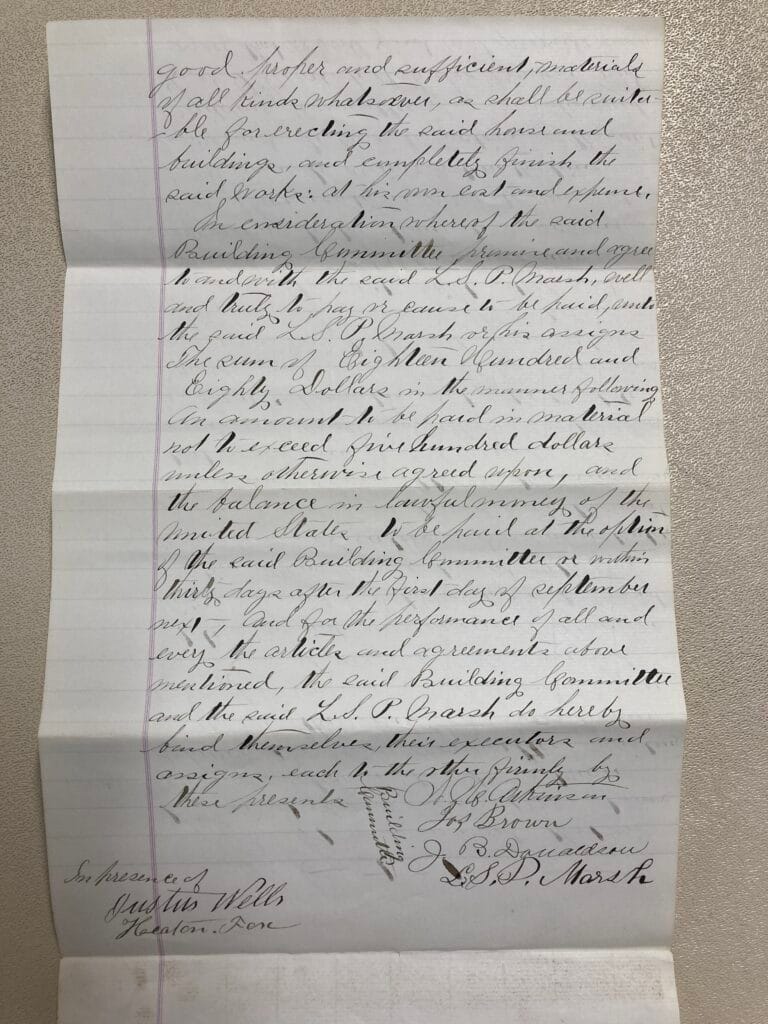
Because some people save documents, we still have the 1878 contract for Ashland contractor L.S.P. Marsh to build a church “within the space of four (4) months.” Look at that penmanship!
The 1878 church
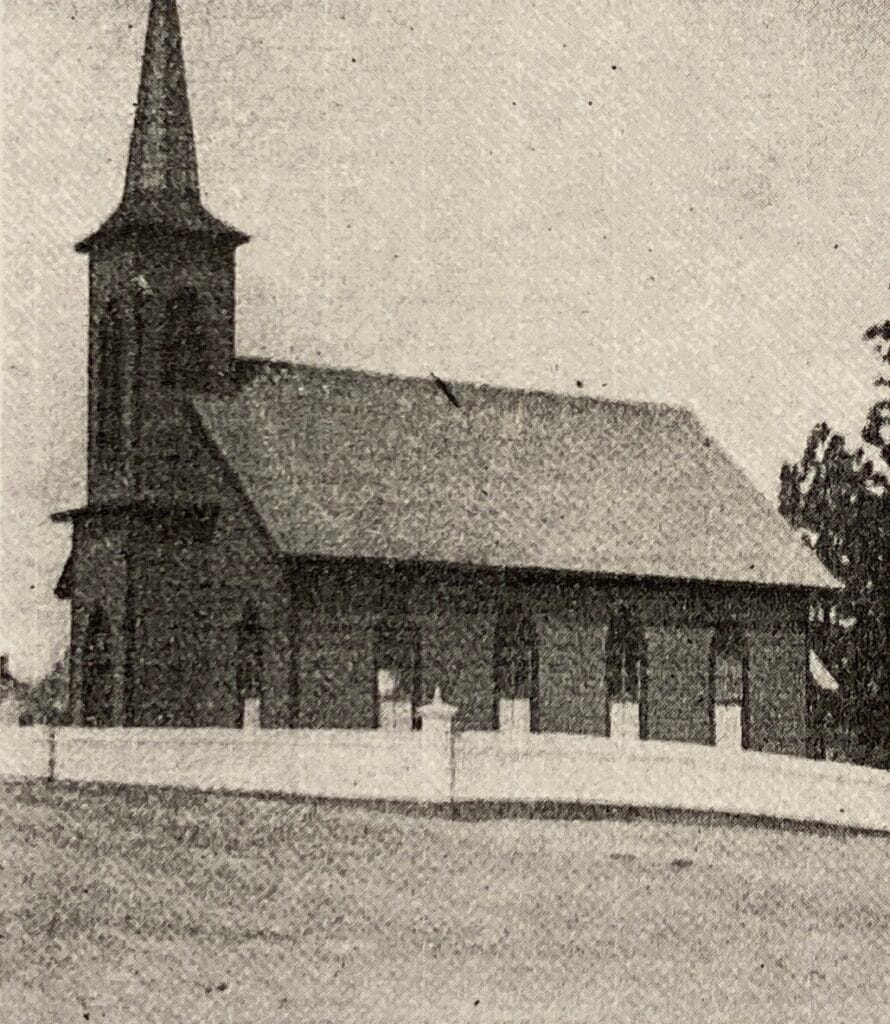
Services in the new church building, at the corner of North Main Street and Helman Street, began in late August 1878.
The bell first rang in the belltower on August 29, 1879. That same bell is in the current First Presbyterian bell tower at the corner of Siskiyou Boulevard and Walker Avenue. The bell is not ringing right now (September 2025), but hopefully will ring again in the near future.
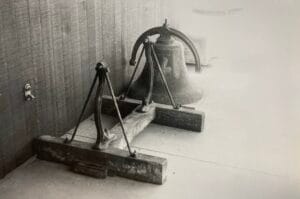
The original small church building was renovated and expanded in 1906, still at the same corner. In 1962, the current church was built along Siskiyou Boulevard, and the old one was replaced by the Bard’s Inn.
The 1906 church
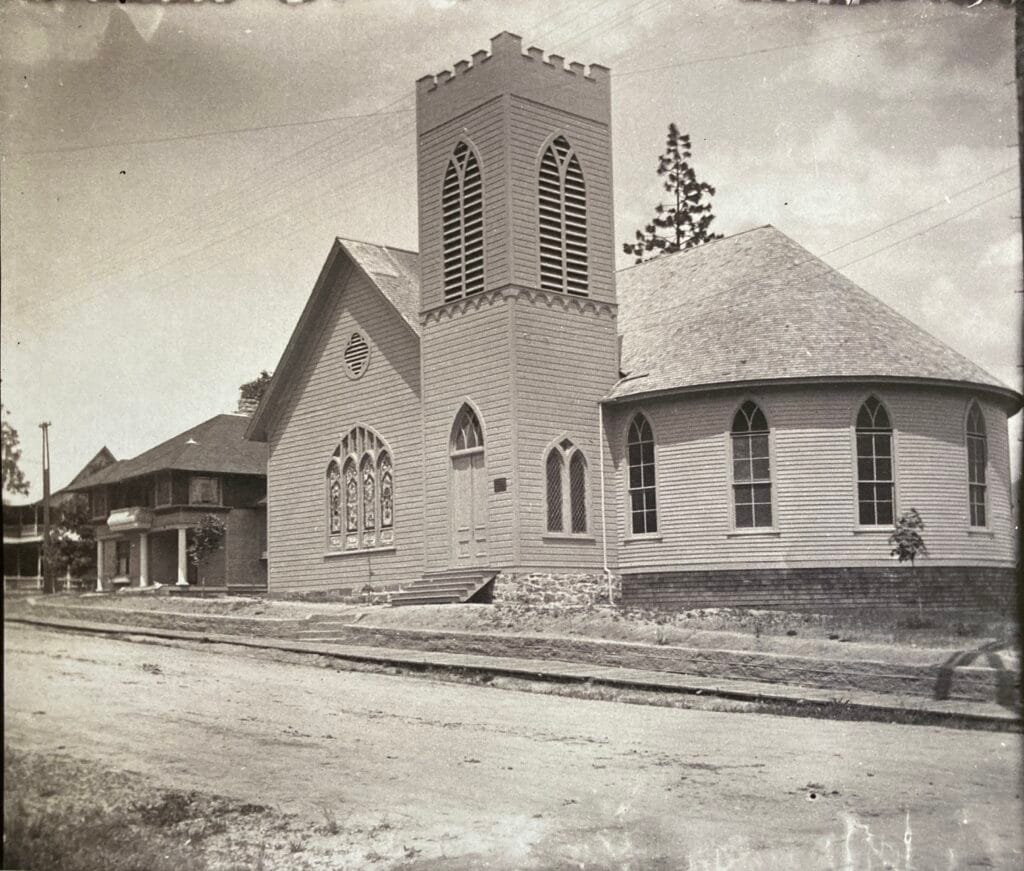
Founders of First Presbyterian Church – their stories
(founder names are in bold type)
Let’s begin our stories about the 22 charter members of First Presbyterian Church with Ann Hill Russell and Ellen Million Giddings, because they both lived right across North Main Street from the church.
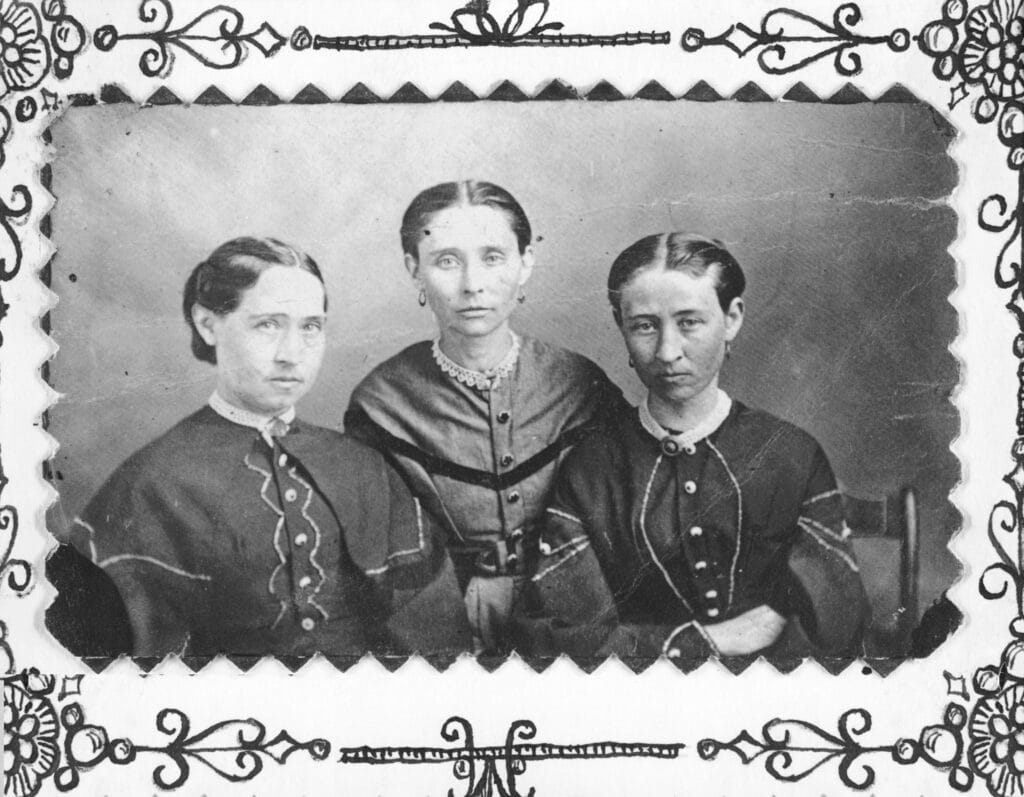
To properly introduce Ann, I have to also introduce her two sisters. All three were charter members of the church. Martha, Mary and Ann were known as the Hill sisters. They are a fount of stories, enough to fill a book. Here is a great story about their first years in the valley, from 1852 to 1854. The quote is from an article by Nan Hannon. “The Hills had a great deal of contact with their neighbors, for their three marriageable daughters drew crowds of bachelors from Yreka, Jacksonville and the Valley. On Sunday mornings the Hills woke to find their fences lined with lonely men eager for a glimpse of the girls …. Hospitable Isaac [their father] always invited the men in for breakfast and conversation. Betsy [their mother] and the girls sometimes spent the whole day cooking for the visitors. The girls were overwhelmed with marriage proposals from men they scarcely knew. To avoid the embarrassment of these unwelcome advances, the sisters made a pact to travel as a threesome, and discourage suitors.”
Ann Hill Russell
Ann Haseltine Hill married in 1854, when she was only 16 years old. Her husband was neighbor James Russell, a marble cutter and carver. They built a marble sawmill in 1865 to cut the local marble being quarried. According to a 1927 article, this was the first marble works in Oregon south of Portland. The couple shipped marble slabs and tombstones all over Southern Oregon.
They lived at 117 North Main Street. As seen in the photo below, their first house there was small, built in 1871.
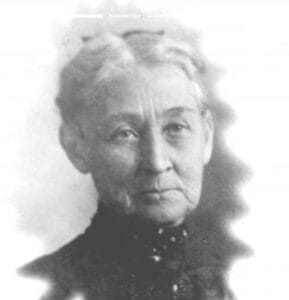
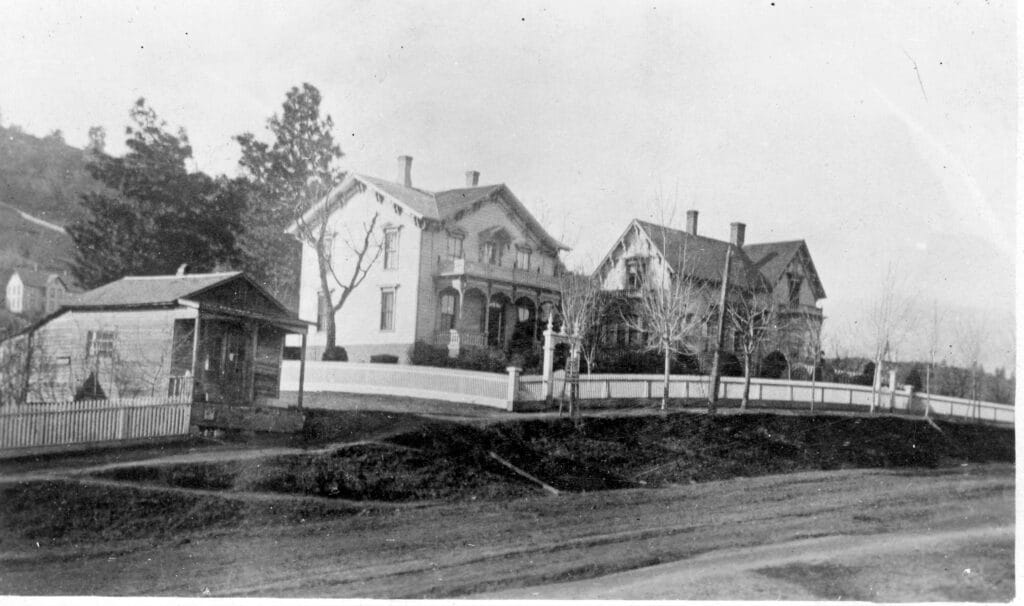
James had less ability to work in his later years, due to injuries. He died in 1895. Ann built a new house on their lot in 1901, which is still here, now across North Main Street from the Bard’s Inn. Ann continued to live in the house until her passing in 1930.
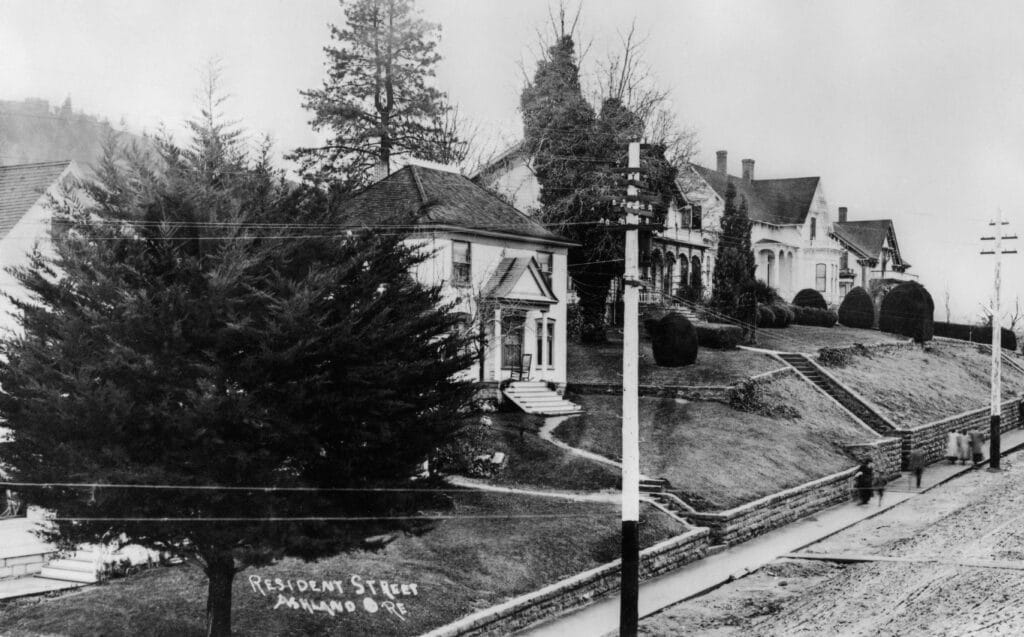
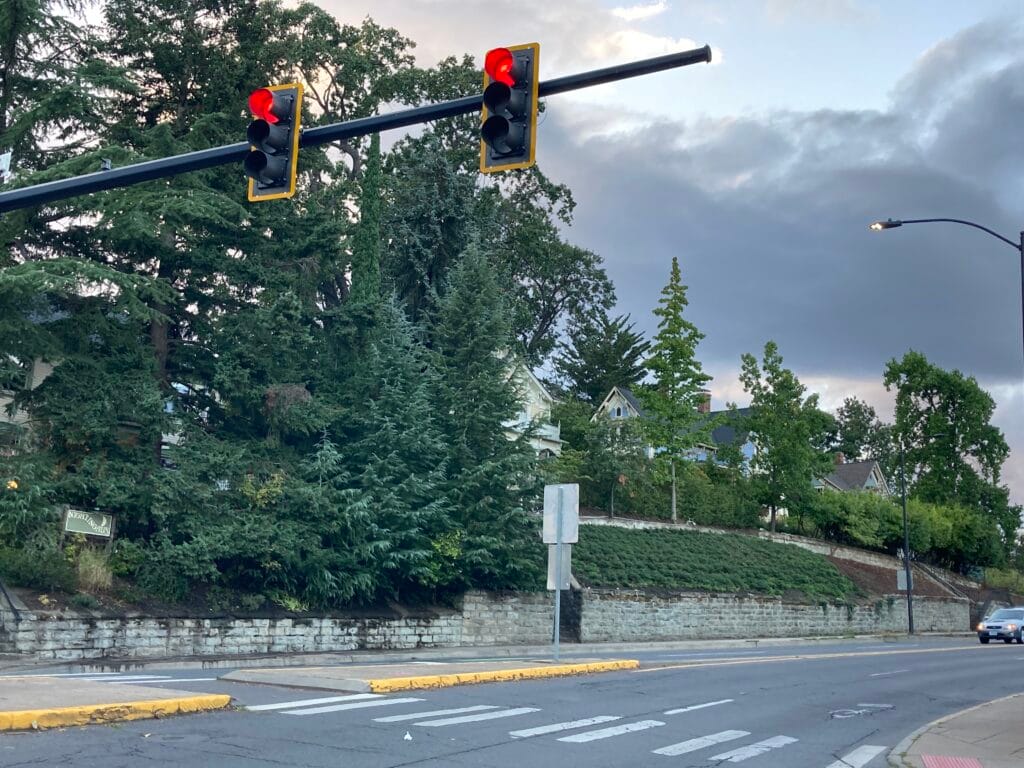
Ann worked in the business with James for many years, even surpassing her husband in the skill of her marble carving. She continued the marble business by herself after James died, working until the age of 90! She is buried at the Hill-Dunn Cemetery by Emigrant Lake, with a grave marker she carved herself — except for one part of it you can surely guess! See the cool photo below.
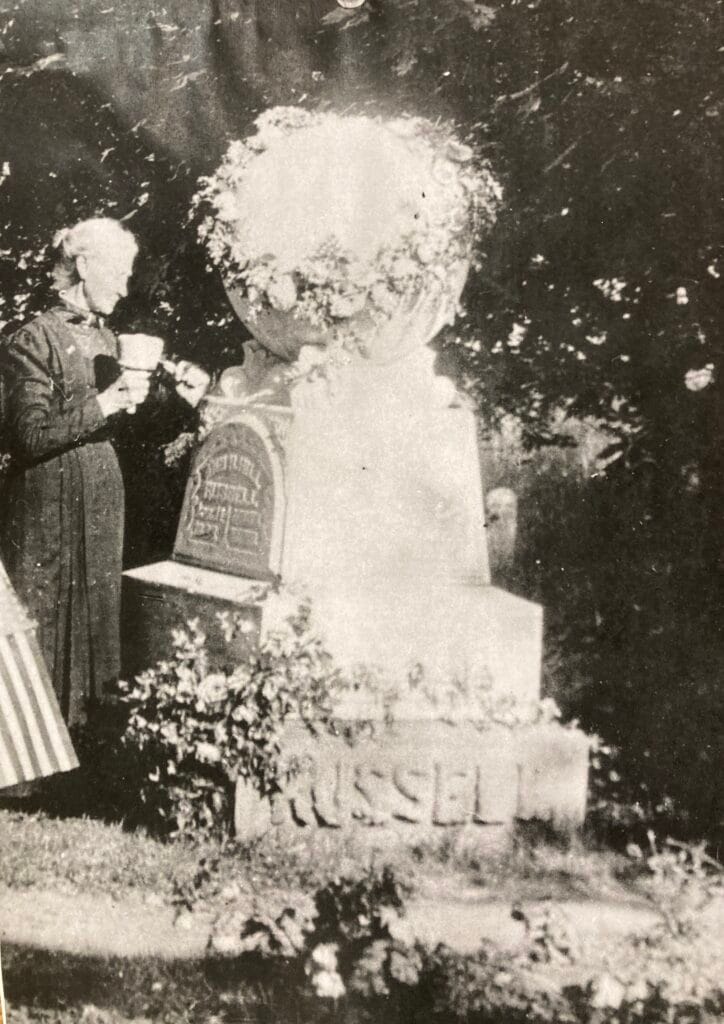
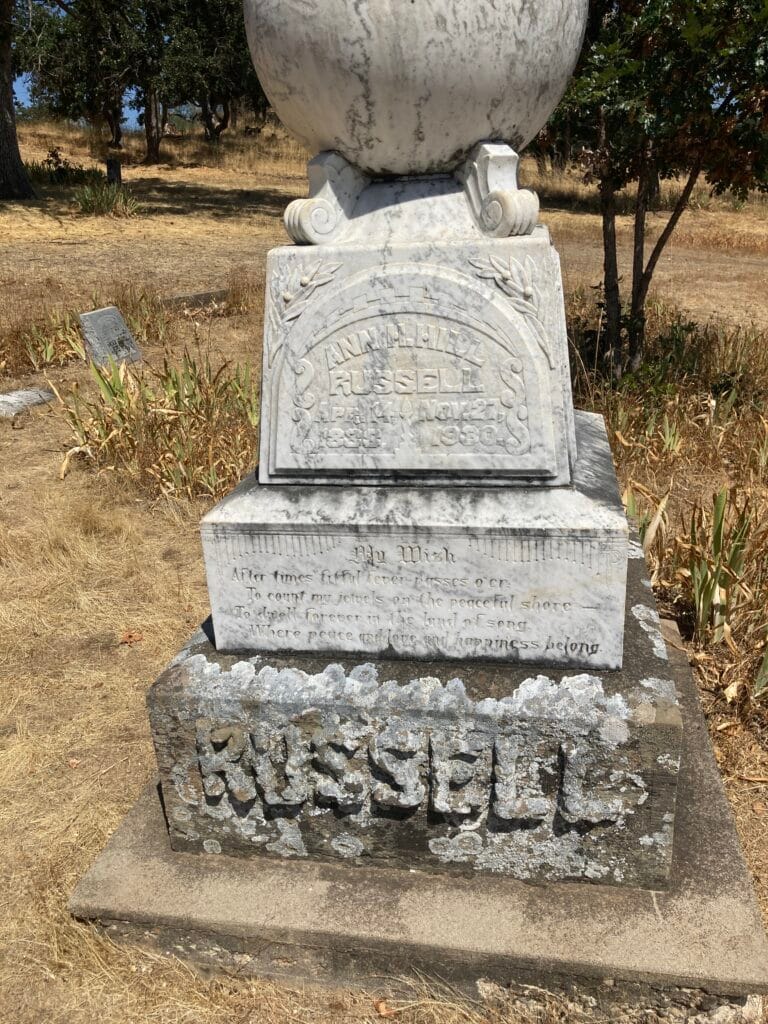
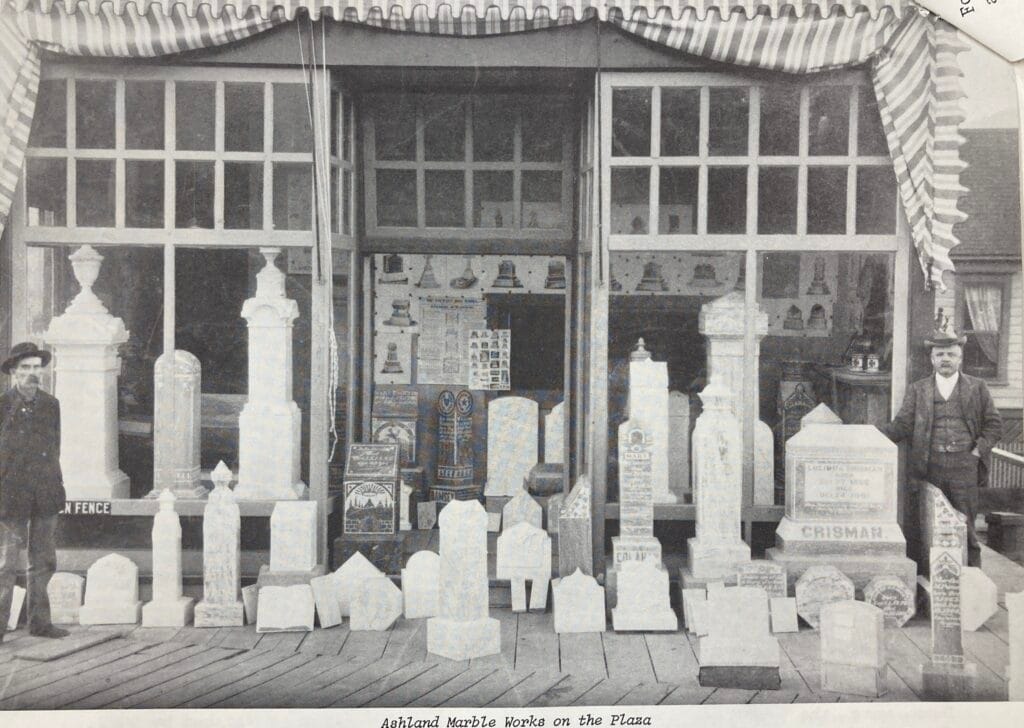
Ellen Million Giddings
Ellen Million Giddings lived at 107 North Main Street – for 60 years! She was the oldest of 12 children born to Bennett and Armilda Million, one of the earliest Ashland pioneer families. Ellen’s sister Laura tells this humorous family story: “Six of us were born before [the family] came across the plains, and the other six were born here in Oregon. There were seven girls and five boys in our family. They always used to say that father was pretty well fixed, with seven Million girls and five Million boys.”
Ellen married Absolum Giddings, a farmer and stage driver. Their house at 107 North Main isn’t there anymore. The house was removed to make room for the expansion of Wolff’s Chevron station, which had been opened by C.L. Wolff on the corner of North Main and Church streets in 1926. Now you’ll find the Sonnet building of Bard’s Inn at that location. Ellen is buried in the Mausoleum at Mountain View Cemetery.
Kentnor, Jacobs and Neil
During the September 6, 2025 trolley tour, we drove by four more houses where church founders lived, on our way to a stop at Ashland Cemetery.
Ellen’s sister Sarah Million Kentnor married William Wilson (W.W.) Kentnor, who had a wagon making business near the Ashland Plaza. Both Sarah and W.W. were charter members of the church. After her husband’s death, Sarah lived at 188 Factory Street for about 20 years. If you look for a house at 188 Factory Street now, you won’t find it. Factory Street is one of many Ashland streets that has changed names through the years. To find her house, go to 188 Central Avenue!
W.W. Kentnor was very active in the early Ashland community. He was elected to two terms on the city council, was President of the Pioneer Society of Southern Oregon – the log cabin building on Winburn Way was built for the Pioneer Society – and he was a leader in the Ashland I.O.O.F. lodge. What’s I.O.O.F.? That’s the Odd Fellows, which was America’s largest fraternal organization of the late 1800s. Their building is also still standing, on the Ashland Plaza.
Sarah and W.W. Kentnor are both buried in the Mausoleum at Mountain View Cemetery.
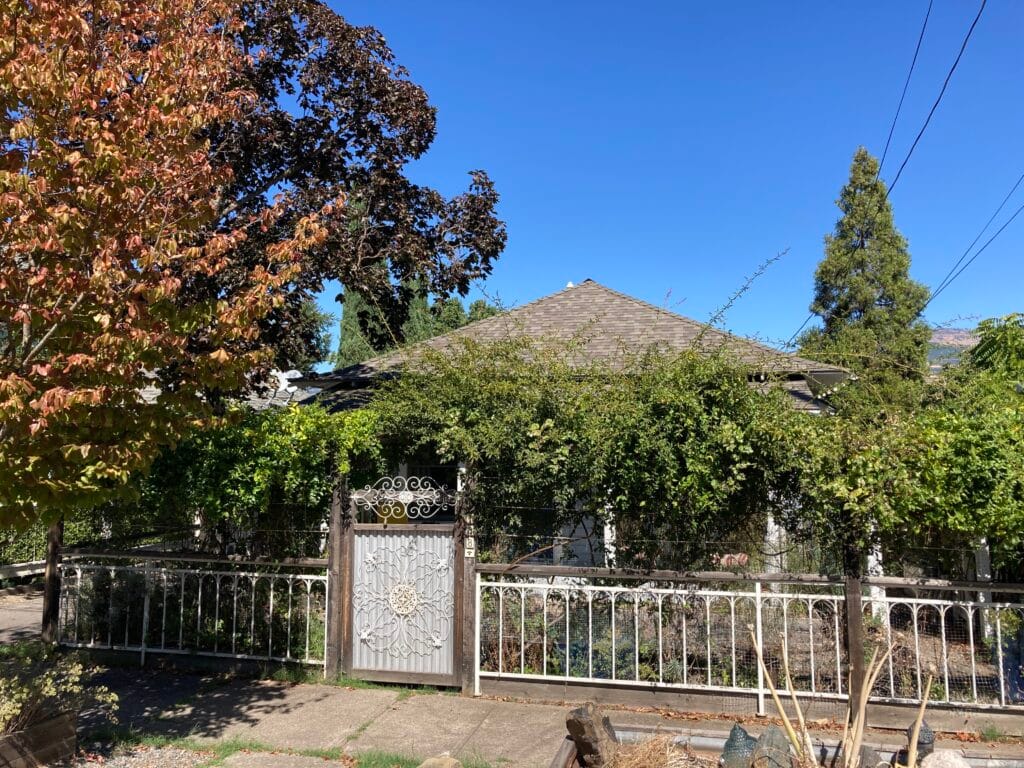
Mayhetta Jacobs, which was her name in the list of charter members, lived in the house next door at 196 Factory Street. Now you know how to find her address – go to 196 Central Avenue. I think she moved in here with one of her children after her second husband Abraham Jacobs died in 1907. If you visit her grave at Ashland Cemetery, you’ll see her name on the grave stone as May Jacobs. Her birth name was Maletta Gage, so I think May was her nickname that became “real” enough to be on a grave marker.
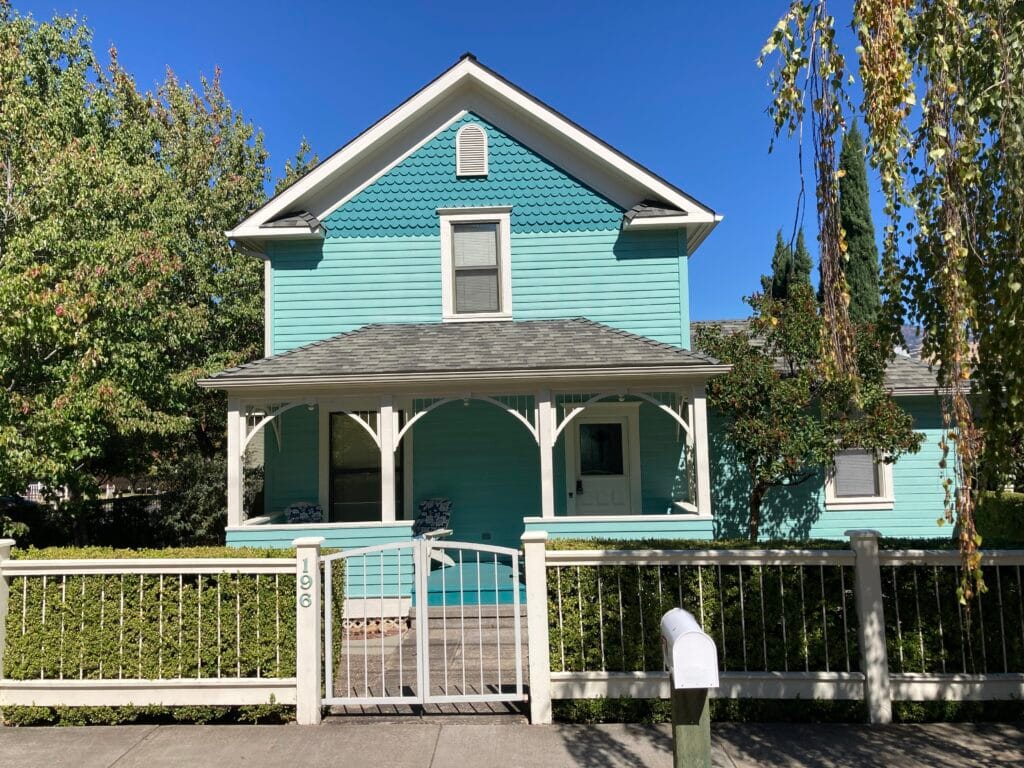
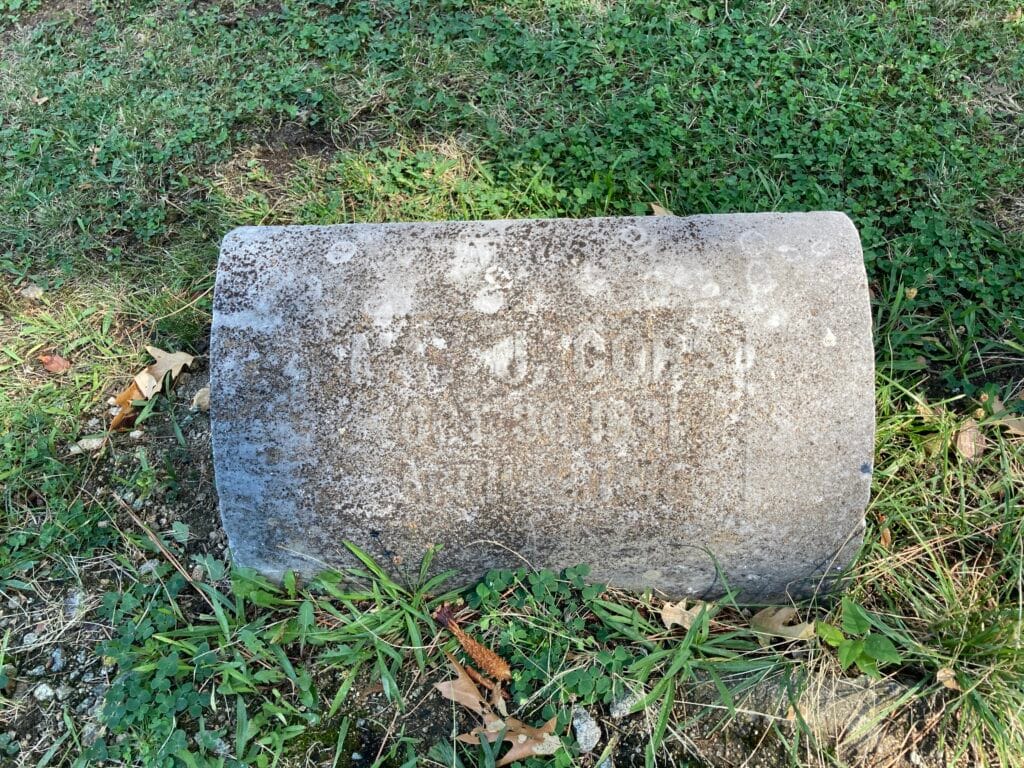
Claiborne Neil and Louisa Gibson Neil were both Oregon Trail pioneers. They farmed 280 acres five miles east of Ashland, and Neil Creek is named after them. Claiborne and Louisa married in 1840 and had nine children together. Louisa died young, in 1880.
Ten years after his first wife died, Claiborne remarried. He and his second wife moved into town, where they lived at 244 Mechanic Street. The name of Mechanic Street was also changed – to Van Ness Avenue. There is a house at 244 Van Ness Avenue, but it looks like a newer house, not the original.
Martha Hill Gillette
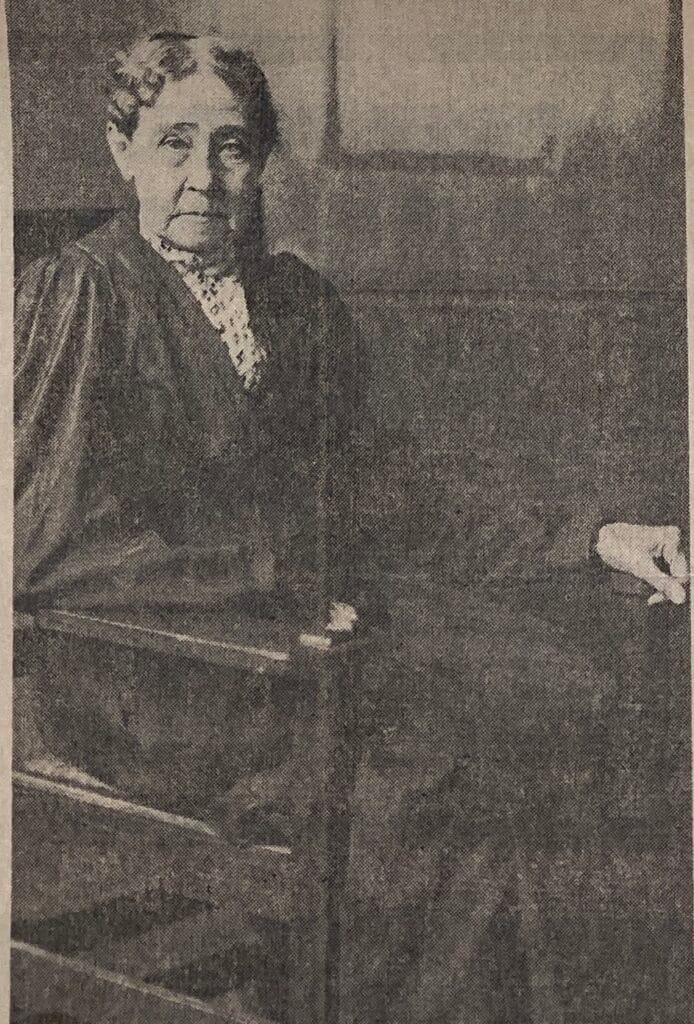
Another of the Hill sisters, Martha Hill Gillette, lived at 92 Church Street at the corner of Church and High. Martha was the last sister to marry. She chose A.V. Gillette, a cabinet maker from Yreka, as her husband. The couple settled in Ashland in 1857, where A.V. became the town Recorder.
Here is a fascinating story, related to Martha Hill Gillette. Martha said in her memoir: “I was born in East Tennessee, in the year of 1833; the night that went down in history for the falling of the stars ….” That intrigued me, so I looked it up. According to the Library of Congress: “The Leonid meteor storm was seen across the United States in the night and early morning of November 12th and 13th, 1833. Those who were awake to witness the storm were in awe as between 50,000 and 150,000 meteors fell each hour.” The Leonid meteor shower is an annual occurrence, with a much larger one every 33 years. The one the night of Martha’s birth may have been the most dramatic in human memory.
Martha was a very active church member throughout her long life. To this day, First Presbyterian Church has a women’s group called the Martha Gillette Guild. It began in 1919, the year before her death. A newspaper account in 1969, the 50th anniversary of the Guild, stated: “Because of her love of God, her generosity to all, and her cheerful serenity, her name was chosen by the original members and Mrs. C.F. Koehler, the organizer of the guild, as a fitting example of the undaunted spirit of a Christian woman.”
Martha saw Ashland grow from its very beginning to become a thriving town of 5,000 people. She wrote in her memoir: “It is such a wonderful thing to live through the growth of a city and see it develop from a wigwam to a great center of civilization. … All through the hardships, all through the big efforts of pioneer days, it was the hope of what was to come that kept our souls buoyant. It was the great hope that young men and women brought from the East, more than their store of riches, that built up the country.”
Mary Hill Dunn
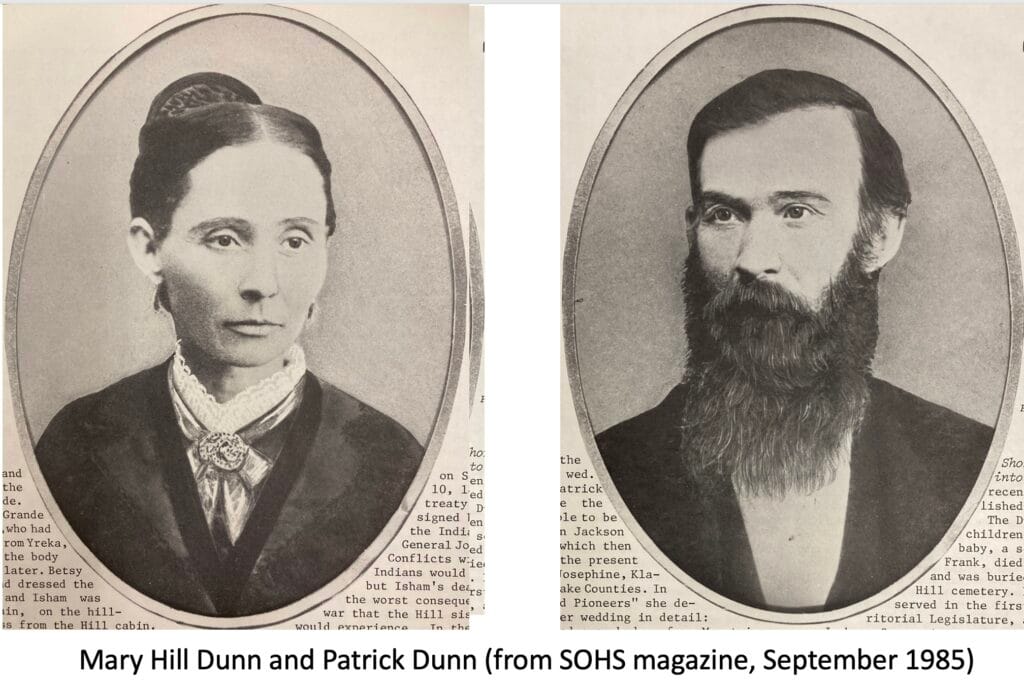
Now I’ll tell you about the third Hill sister, Mary Hill Dunn. She was the first sister to marry, tying the knot with neighbor Patrick Dunn in 1854. Mary and Patrick were probably the first couple to marry in the Rogue Valley. Here’s how she described the wedding feast in her memoir. “Mother had a cook down from Mountain House for three days preparing for the feast. Father killed a beef. The fruits and flour were from South America, packed over from Crescent City. Mr. Burns of Yreka baked a large fruit cake for the occasion, and Aunt Kelly carried it in a bucket in her lap as she rode over the Siskiyous on horseback. There was a big dinner for everybody.” Try to imagine carrying a fruit cake on your lap — while riding a horse on a dirt road from Yreka to Ashland!
Their first house together was Patrick’s log cabin, built on his large farm. In 1860, they built a two-story house that is still here, along Highway 66. They were among the wealthiest people in Ashland during the late 1800s.
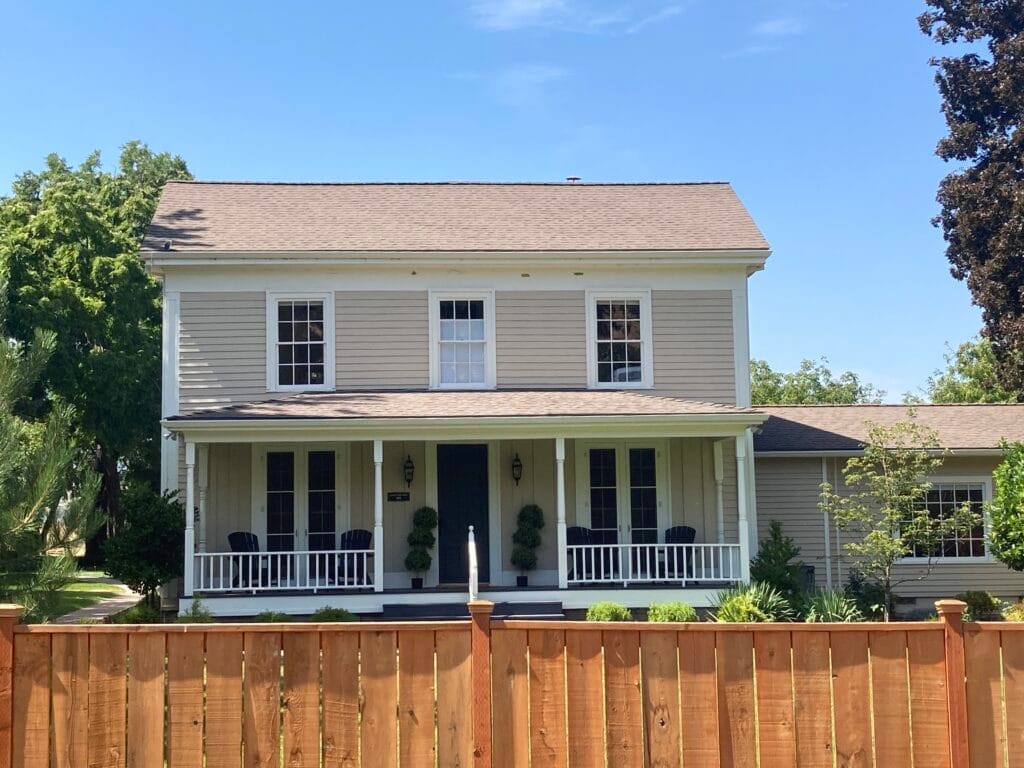
They moved into Ashland in 1887, living at 65 Granite Street until Patrick died in 1901. The double-decked two story house is still here.
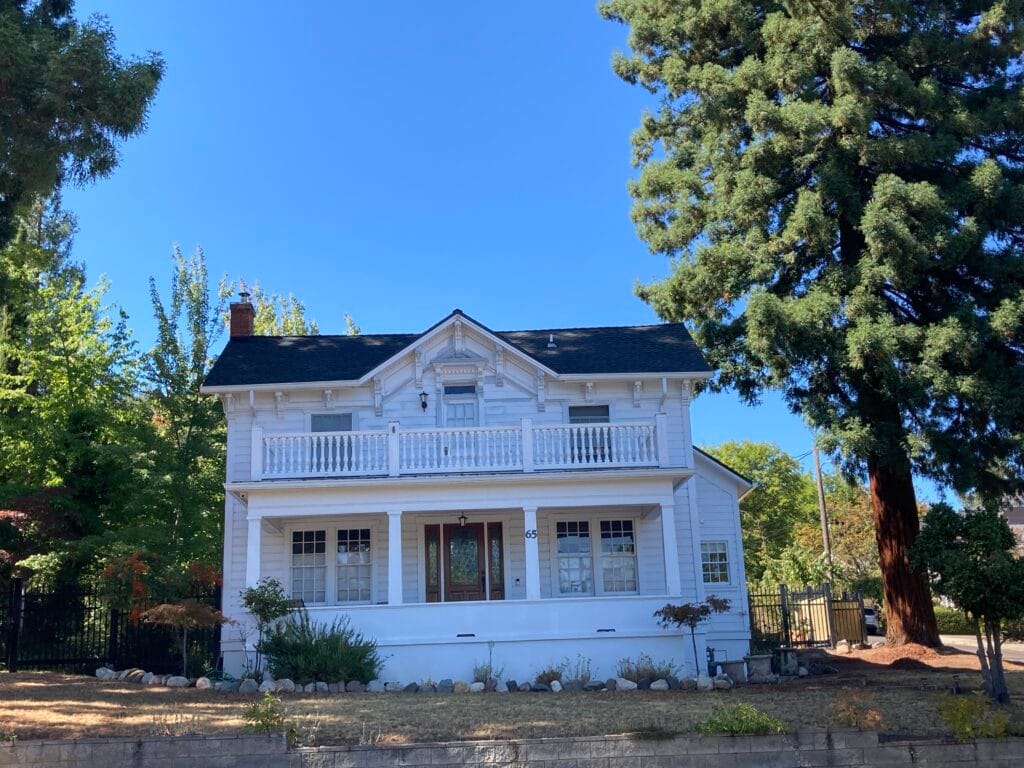
In her obituary, Mary was described as “active in church work. No matter how hard the duties of home life on the farm were, she always was on hand at church and Sunday school with her children.”
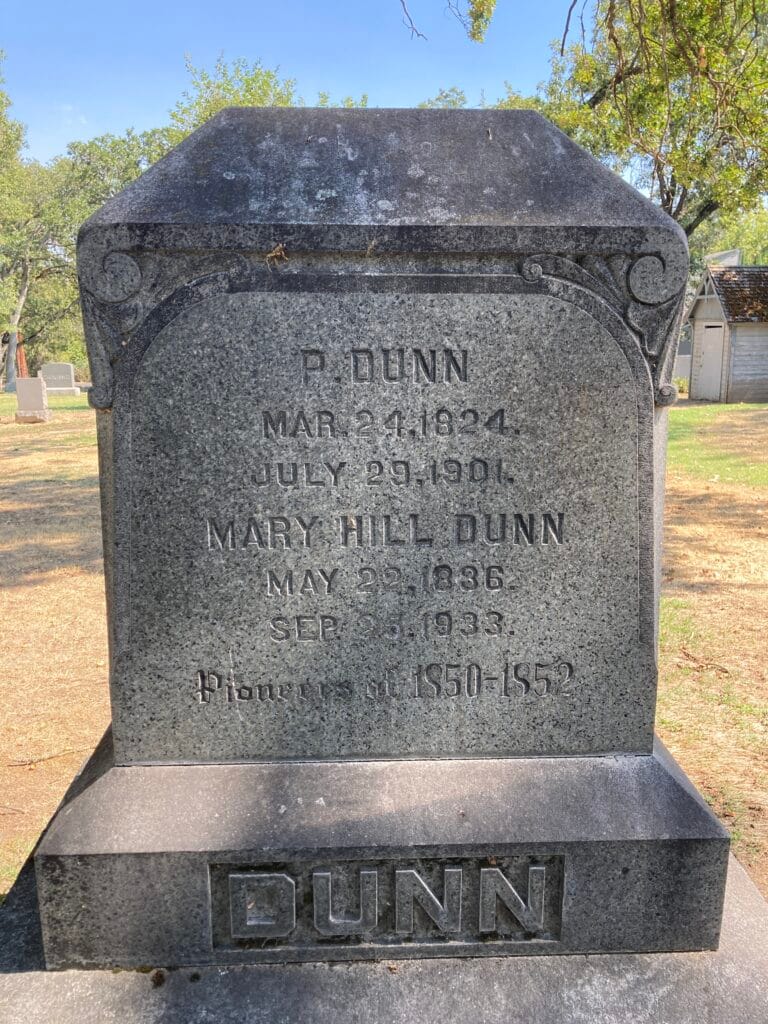
The Grubb family
Samuel and Elizabeth Grubb came from Iowa and began farming a mile from Ashland in 1853. It was farmland outside of Ashland then, but now it’s right in town. Some of you may remember the large barn that was here at the corner of East Main Street and Walker Avenue, where ScienceWorks is located.
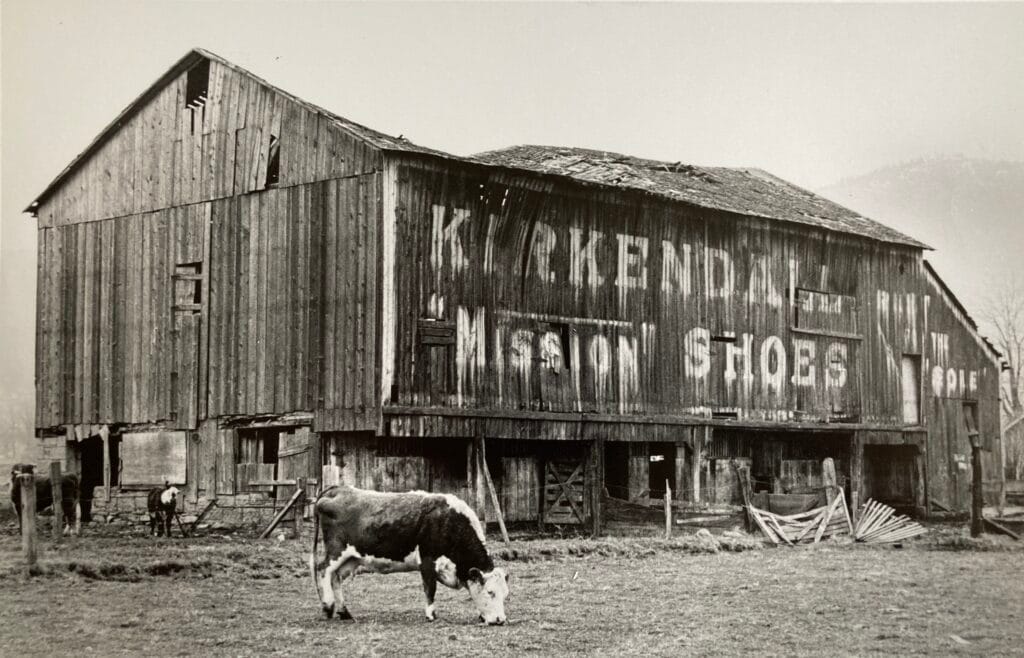
They were founding members of the church, as were two of their daughters, Sarah Grubb Walker, and Nancy Elizabeth Grubb Applegate.
Nancy married William Henry Applegate, a son of famous pioneer Jesse Applegate. They farmed in Linkville (now Klamath Falls), then began farming east of Ashland, out by the Dunn ranch.
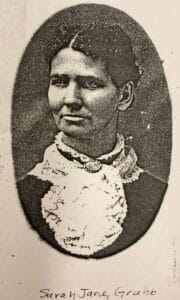
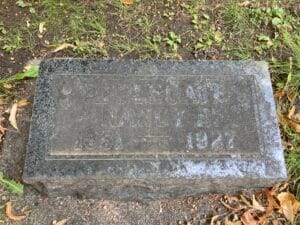
Taylor, Ralph and Howard
Betsy Taylor, a church founder, was married to a farmer named John Taylor. With their children, the family crossed the plains from Philadelphia to Ashland in 1860. Betsy and John are buried at the Hill-Dunn Cemetery by Emigrant Lake.
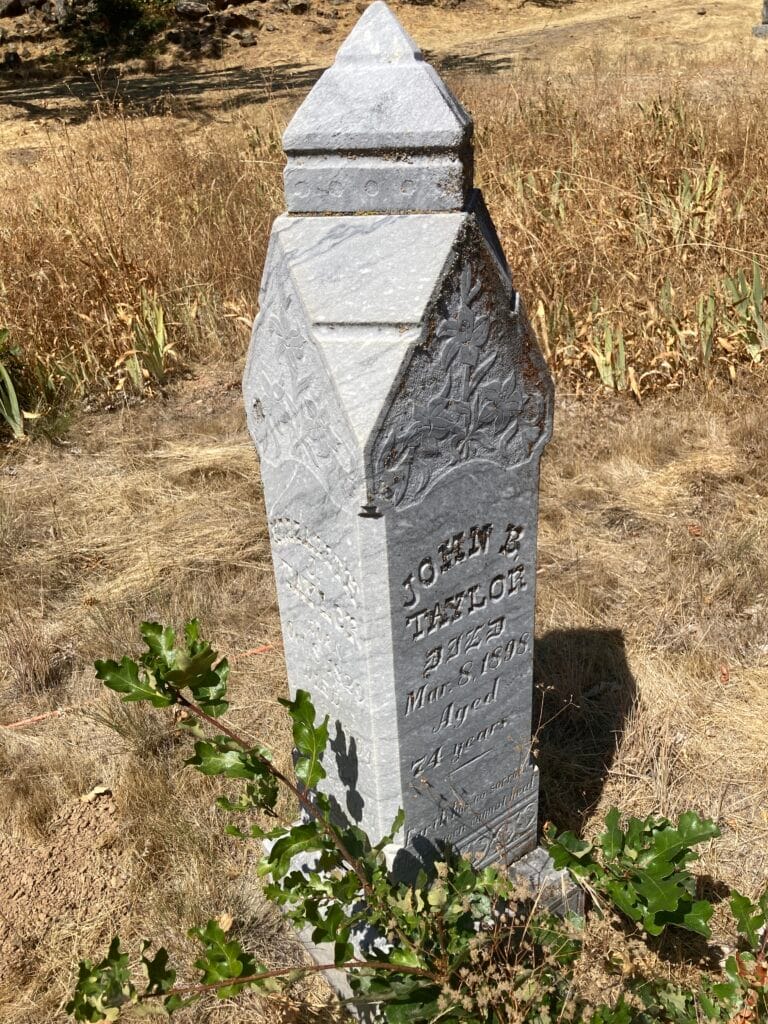
Charter member Helen Ralph and her husband John Ralph were both born in Scotland. We don’t know much about them. In the 1880 census, they lived in Ashland and John’s occupation was listed as wagon maker.
Laura J. Million Howard is a third Million sister who was a church founder. She first married James Woodson, with whom she had seven children. After his death, she married Jefferson Howard in 1908. The Million family arrived in Ashland in 1854, just weeks after the Ashland Flour Mill was built. She said, “The first school I attended was held in Eber Emery’s cabin. I was 7 years old when I started to school, and Lizzie Anderson was the teacher.” As a side note, Lizzie later married John McCall and the couple built the McCall House on Oak Street in 1883.
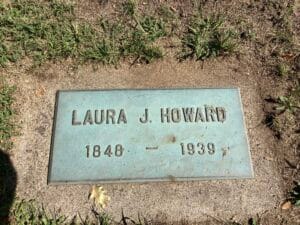
Martha and Giles Wells
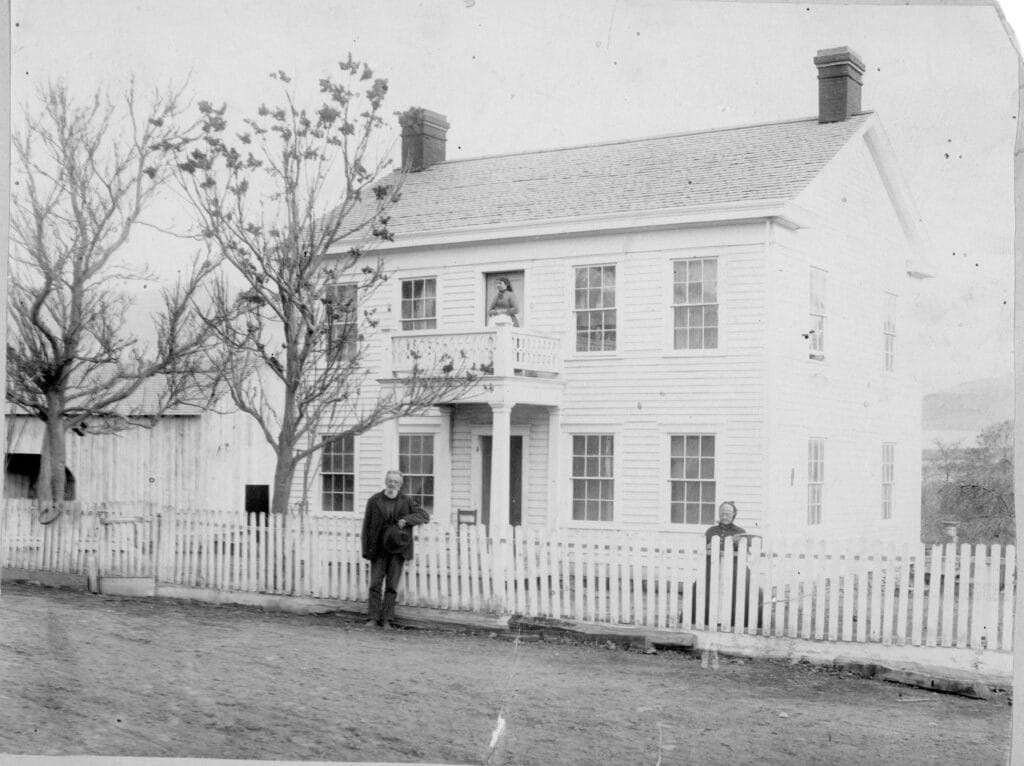
Martha Wells and Giles Wells came across the plains as part of a huge 1853 wagon train and settled just east of Ashland. Their land was along the Stage Road, including what is now Oak Knoll Golf Course. Their 1860 house is still here along Hwy 66, across the street from the entrance to the golf course.
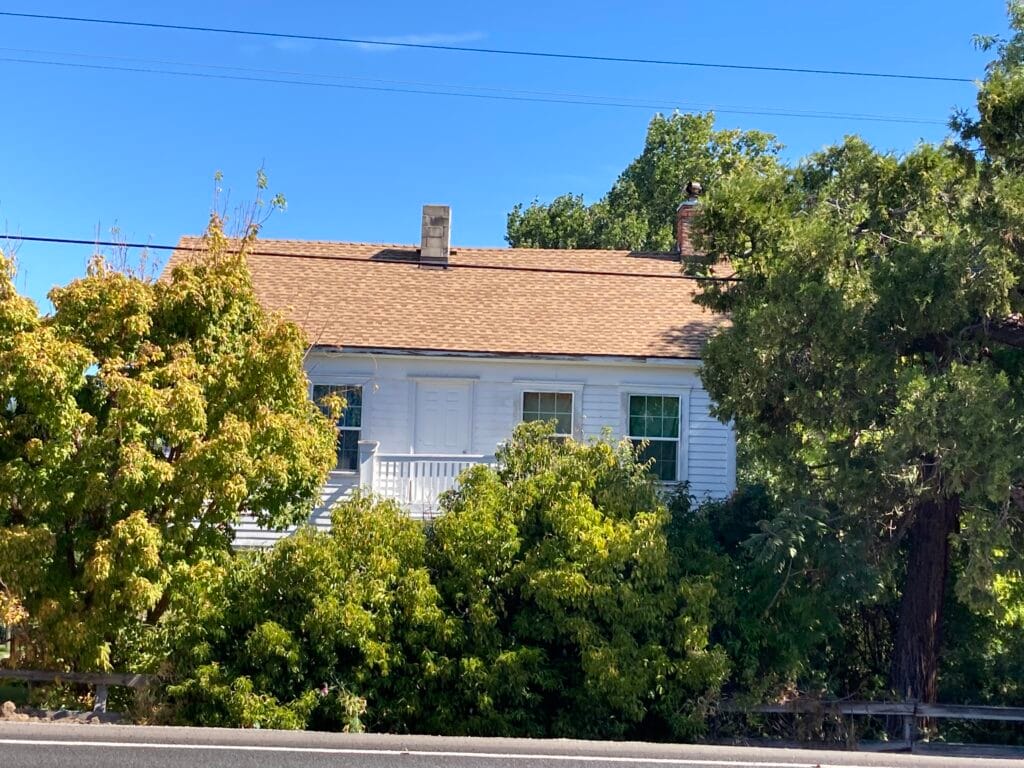
They created a family graveyard on their property, on the other side of the Stage Road. It is my understanding that it eventually became overgrown with vegetation and was “lost” for many years. The graves were discovered by one of the golf course groundskeepers who was clearing brush near the fourth green.
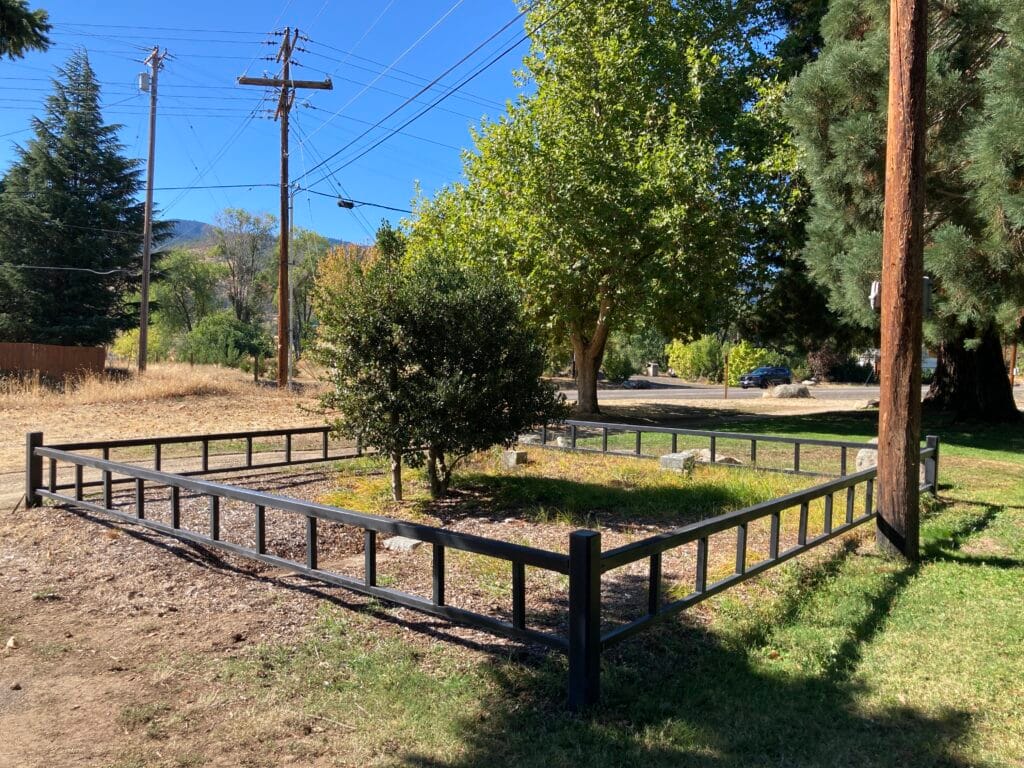
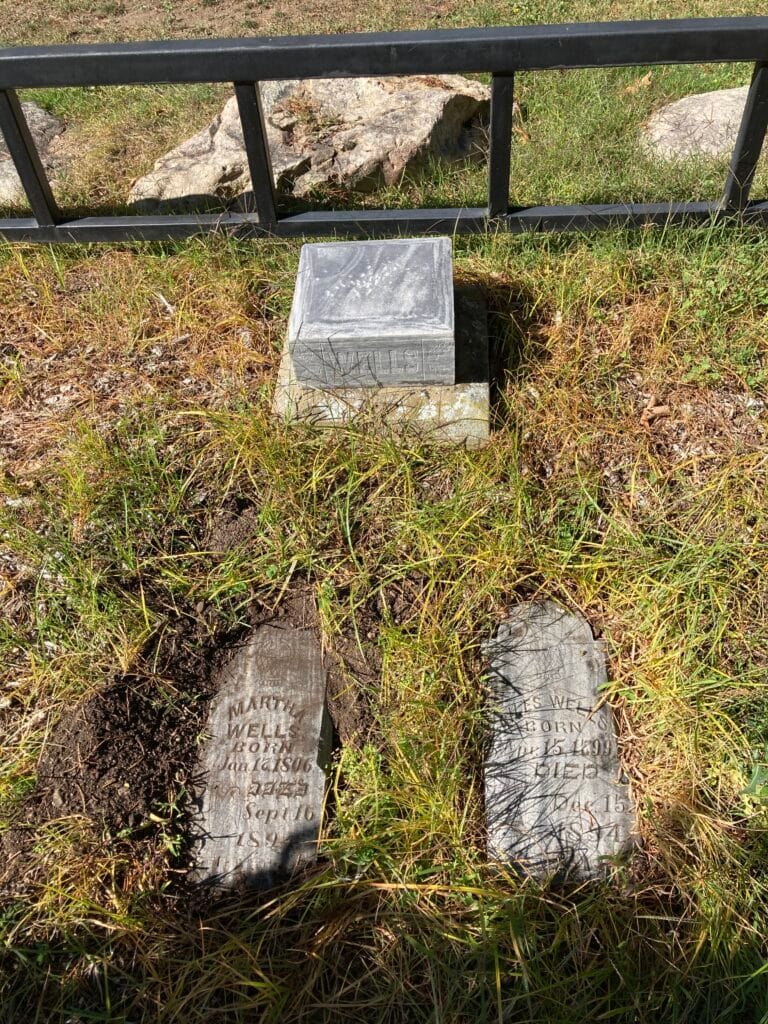
I learned a fascinating story about a granddaughter of Martha and Giles. Her name was Pocahontas Wells Hosley, and she and her husband Roy lived on Third Street in Ashland. With a name like Pocahontas, I had to see what I could learn about her.
It turns out that a friend of mine has done extensive genealogy of her own family, going back to the early 1600s in Virginia. My friend discovered that her family is descended from the marriage of Pocahontas, a Native American of the Powhatan tribe, and John Rolfe, a pioneering tobacco farmer in Virginia.
I introduced my friend to Ashland’s Pocahontas Wells Hosley. Fascinated, and with strong genealogy skills, she traced the Wells family genealogy. She found that the historical Pocahontas is the 8th great aunt of Pocahontas Wells Hosley. It is likely that the family knew of this connection and kept the name alive in their lineage.
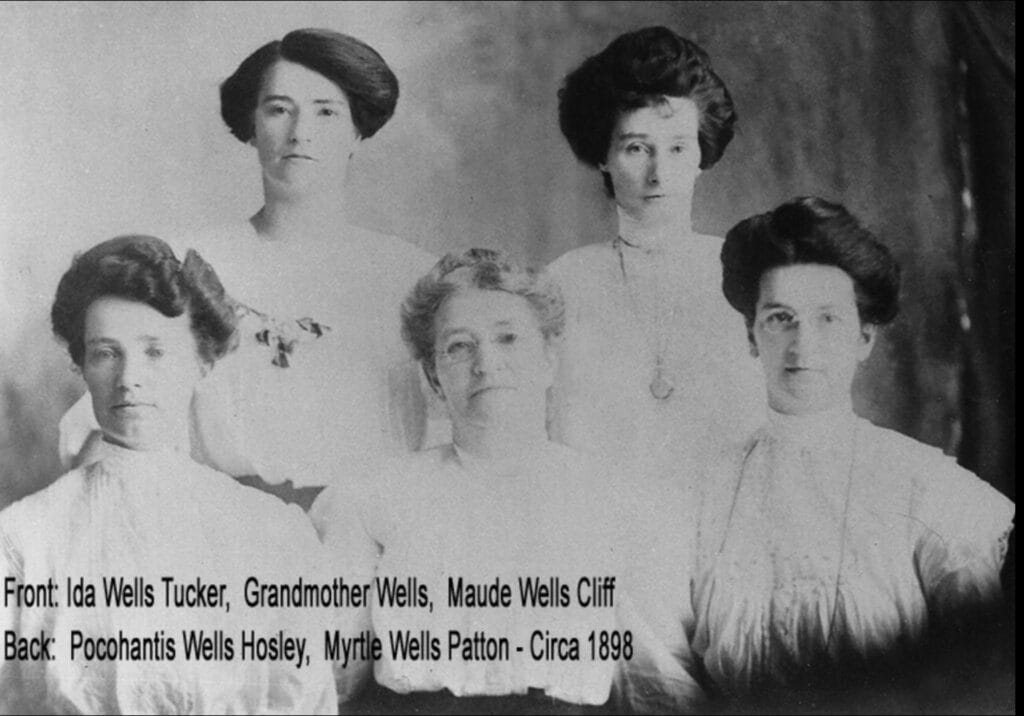
Ewing, Buick, Goodchild and Marshall
Harriett Ewing married James Ewing, a farmer and blacksmith, in 1848. They seem to have lived most of their married life in Yamhill, Oregon. However, they must have been living in Ashland by 1875, when Harriett was a founder of First Presbyterian Church. Three years later, James died in Ashland. Harriett survived him by eleven years. Abel Helman mentioned her death, without details or emotions, in his 1889 diary, saying she is “buried here.”
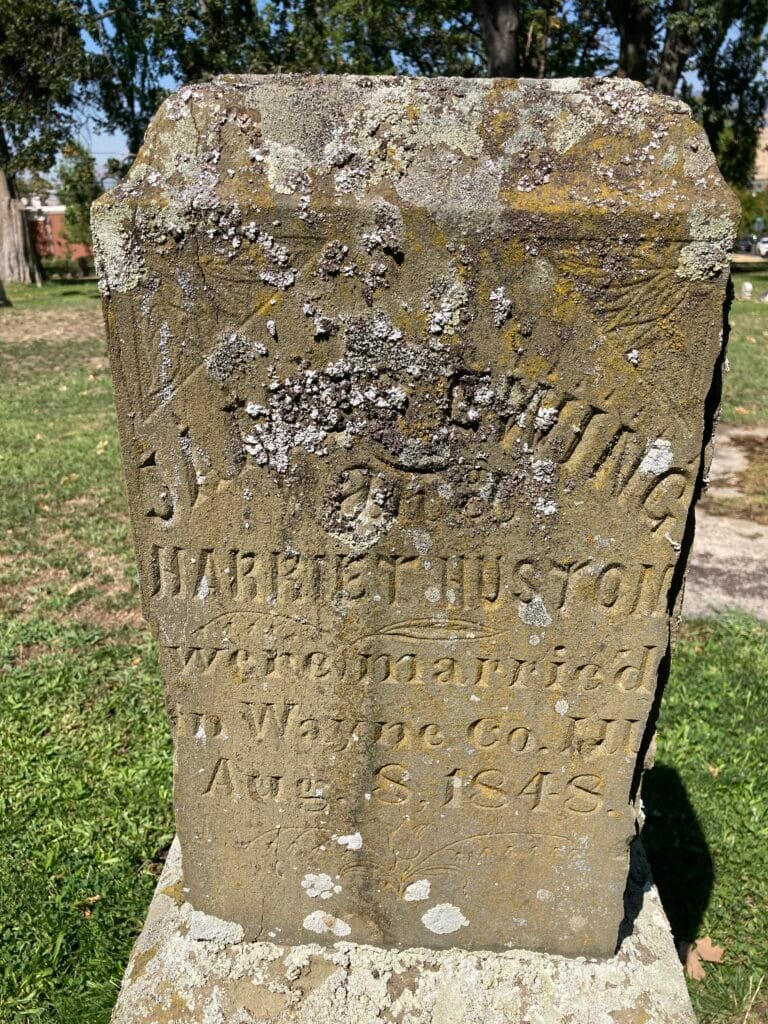
Janetta Buick was married to D.S.K. Buick, another couple both born in Scotland. They had nine children together. D.S.K. came from an ancient Scottish family with a multi-generational business, but he chose as a young man to sail for California and its rivers of gold. He married Janetta there, and they stayed in California for 23 years, with D.S.K. active as a merchant and farmer.
They lived in the Ashland area only four years, from 1872 to 1876, but were active in the community. D.S.K. was a charter member of the Ashland I.O.O.F. lodge when it began in 1873. Both Janetta and D.S.K. were staunch Presbyterians, but for some reason only Janetta is on the charter member list of the Ashland church. Both are buried in Roseburg, Oregon, where they moved in 1876.
Another mystery is why and how Charles and Elizabeth Goodchild were both charter members of the church. When I looked at the U.S. census of 1860, 1870 and 1880, it appeared that they lived in the Salem and Eugene area all of their married lives. In addition, they are buried in the Masonic Cemetery in Eugene. No obvious connection with Ashland.
The census records also provided a clue. In the 1870 census, his work is described as “Carder & Spinner.” Then in the 1880 census, his profession was changed to “Manufacturer, Woolen.”
The breakthrough came when I found that Charles Goodchild was co-owner of the Ashland Woolen Mills from 1871 until 1878. And when was the church founded? In 1875. So the couple must have been living in Ashland through most of the 1870s.
Then I dug deeper and discovered Charles was elected a Trustee of the brand new Presbyterian Church, and was on the Ashland City Council in 1877.
Charles wasn’t the only family member immersed in the community. According to the Ashland Tidings of July 8, 1876, Elizabeth Goodchild gave an “oration” at the big July 4th Centennial celebration. The paper said she “received the highest praise by every one who heard it. A committee was appointed to solicit a copy for publication in the Tidings. It will accordingly appear next week, when all will have an opportunity to enjoy a treat.”
Jane Marshall was the only charter member Cathy Carl and I could not learn anything about.
The 1960s Presbyterian Church building
After 84 years of services at the corner of North Main Street and Helman Street, First Presbyterian Church sold that site, which became the location of Bard’s Inn Motel. A new church was built at the corner of Siskiyou Blvd and Walker Avenue, with first services there in May 1962.
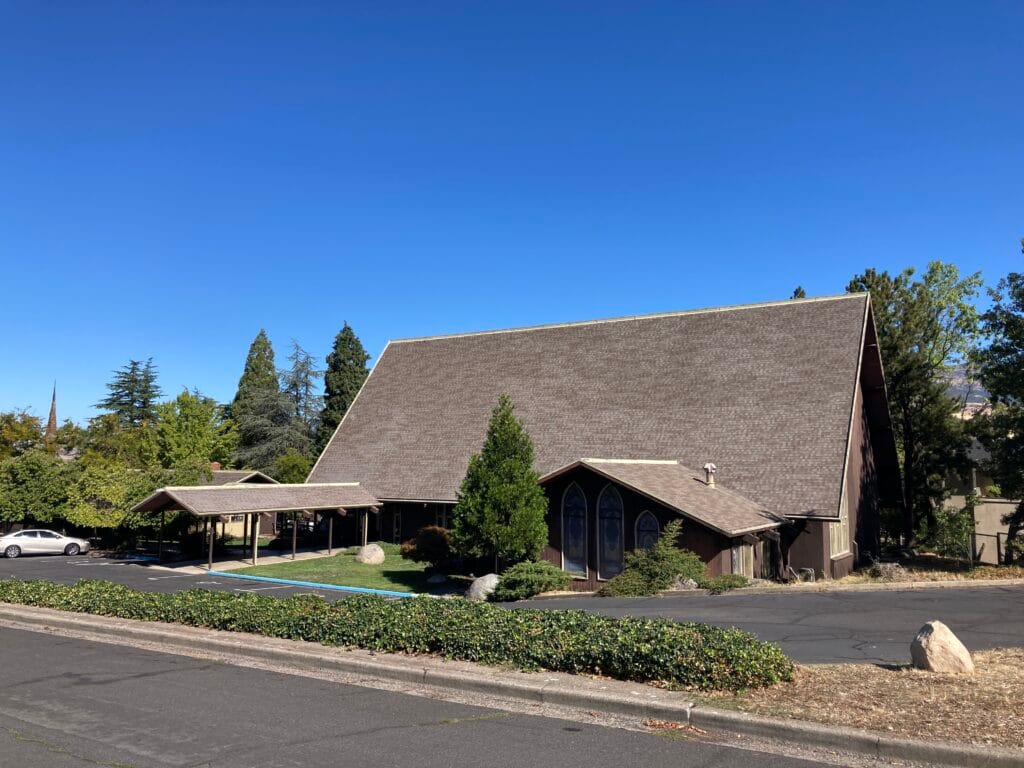
The tall bell tower at the corner was dedicated in August of 1968, where the original 1879 church bells were installed and began to ring again. Calvin Hall (the social hall) was added in 1981, and a small, cozy chapel in 1983. Stained glass windows, which had also been brought from the original church, were installed in the chapel and the narthex in 1984.
First Presbyterian Church of Ashland in 2025
I like this quote from the church website, which gives an insight into the hearts and values of the current members of First Presbyterian:
“We are a faith community, centered in Christ, doing justice, loving kindness, and walking humbly with God.
Our core values:
We celebrate diverse worship styles.
We nurture our church community and are actively involved in our wider community.
We promote education and value dialogue over dogma.
We put our faith into action through our mission and support of social justice and peace.
We encourage faith exploration and spiritual growth.
We express our faith creatively.
We value children and youth and respect their gifts.
We are Presbyterians connected to the greater church.”
References (only a few of the many sources)
Anon. “Tribute to Father Williams,” (obituary), First Presbyterian Church collection.
Andrews, Grace. “Church history is closely aligned with city story,” Ashland Tidings, August 28, 1925.
Dunn, Mary Hill. Undaunted Pioneers, (her memoir).
Hannon, Nan. “The Hill family of Ashland,” The Table Rock Sentinel, Southern Oregon Historical Society newsletter, September October 1985.
McCoy, Imogene Wallace. “The Presbyterian Church and her Century Mark,” First Presbyterian Church collection.
Miller, Clifford. Shining Light (Story of Moses Williams), Ashland, Presbytery of Southwest Oregon, 1972.
Mullaly, Alice. As It Was. September 5, 2019. Source: newspaper article (paper and date unknown) found in the Pioneer Society Scrapbook, SOHS MS 517, Box 3, p.36.
Russell, Ann Hill. Ashland Tidings article, November 12, 1914.





Sharon laskos
Posted at 16:49h, 22 SeptemberNice work Peter!